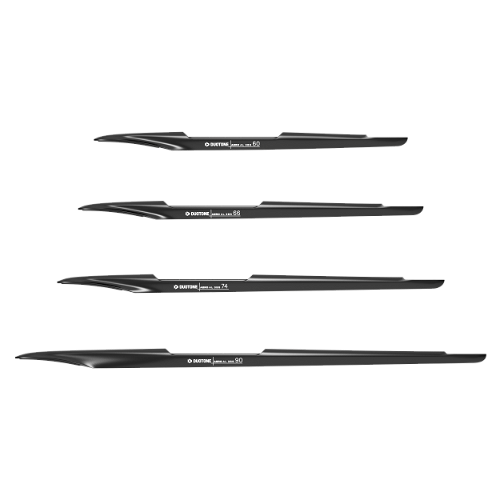Front Wing Crest D/LAB
PRONE / FREEFLY / WAKE / FOIL ASSIST
Skybrid SLS
FREERIDE / FREEFLY / PARAWING
Skybrid D/LAB
FREERIDE / FREEFLY / PARAWING
Fuselage Aero AL 3BS
WING / PRONE / KITE / PUMP / DOWNWIND / SUP / WINDSURF // For SLS & D/LAB Masts and all SLS Foils
Front Wing Glide 2.0 SLS
Freeride Performance / Pump & Glide / Downwind
Downwinder SLS
SUP DOWNWIND / WING LIGHTWIND
Front Wing Glide 2.0 D/LAB
Freeride Performance / Pump & Glide / Downwind
Downwinder Slim SLS
SUP DOWNWIND PERFORMANCE
Skybrid
WING – FREERIDE / FREEFLY
PARAWING FOILING FAQ
The best size largely depends on the prevailing wind conditions. In general, beginners will require a bit more pull to get onto the foil compared to advanced Parawingers. Those transitioning from Wing Foiling to Parawinging should tend to choose a slightly larger size (approximately 0.5 m) than they would for Wing Foiling. An advanced Parawinger will typically select a size similar to that of a Wing Foiler. It's also crucial to choose the appropriate board and foil size, which should generally be larger than what is used in Wing Foiling for optimal performance.
Parawings with Double Surface offer several advantages and disadvantages compared to those with "Single Skin." The primary benefits of Double Surface wings include greater flight stability and improved upwind performance.
On the other hand, Single Skin wings have their advantages, such as a higher lift coefficient, which means that a similarly sized Single Skin wing generates more pressure than a Double Surface wing. Additionally, Single Skin wings are easier to pack due to the reduced amount of fabric. They also allow for simpler water restarts since they do not absorb water. Combining Single Skin with Double Surface tips can merge the benefits of both designs, creating a versatile option for various conditions.
Stowing away a Parawing requires some practice, as the process must occur while foiling. Those with prior experience in Downwind Foiling will find it easier to stow the Parawing compared to newcomers to this discipline. The more glide-efficient the foil, the more time the rider has to focus on packing up the wing.
When the packing method draws less attention, the rider can concentrate more on the water surface and controlling the foil, which in turn gives more time for carefully stowing the wing. The market offers various stowing methods, ranging from hip belts to shirts or vests with built-in compartments for the Parawing.
It is not uncommon to get the lines a bit tangled when launching the Parawing (especially when taking it out of its stored position while foiling). With more practice, this becomes less frequent, but even experienced Parawingers occasionally encounter tangled lines. Different colors for the various line levels can help with quick untangling. Those who stow the bar separately from the Parawing when packing will have significantly fewer issues with tangled lines compared to a setup where the wing is stored together with the bar. The least problems with re-launching occur when you keep the wing and bar each in one hand after bringing them in, allowing for a direct re-launch.
Many riders choose to use the Parawing without a leash to avoid tangling the lines with a leash. If you lose the Parawing, it typically flies a few meters, lands on the water, and then collapses. The wing usually floats on the water's surface for a while before it starts to sink. The bar of the wing remains on the surface, preventing it from completely submerging.
To avoid losing the wing, it's advisable to paddle quickly to the floating wing after releasing or losing the bar, before the canopy sinks and becomes harder to find—especially in very choppy waters.
Parawinging can be quite strenuous on the arms, especially if you use the wing not just as a launch aid for downwinding but also to sail upwind and keep the wing in the air for longer periods. In this case, a wing harness is very helpful for these short upwind and downwind runs.
For easy stowing of the Parawing, flexible or stretchy harness lines are recommended, as they take up little space when not in use.
For more answers on this and other topics, you can find them here in our Help Center.
:grayscale(false):quality(10):blur(20))
:grayscale(false):quality(10):blur(20))
:grayscale(false):quality(10):blur(20))



















